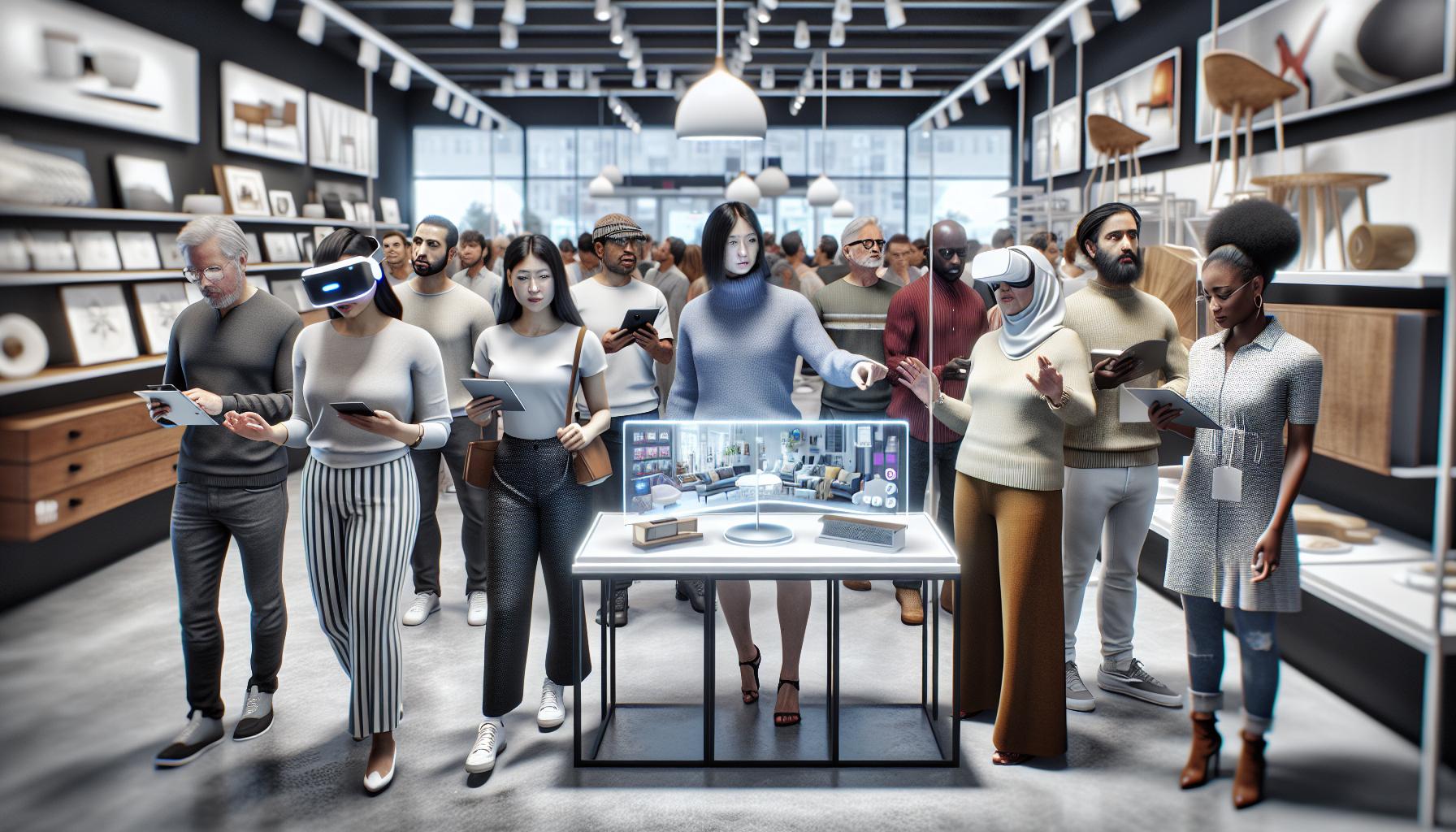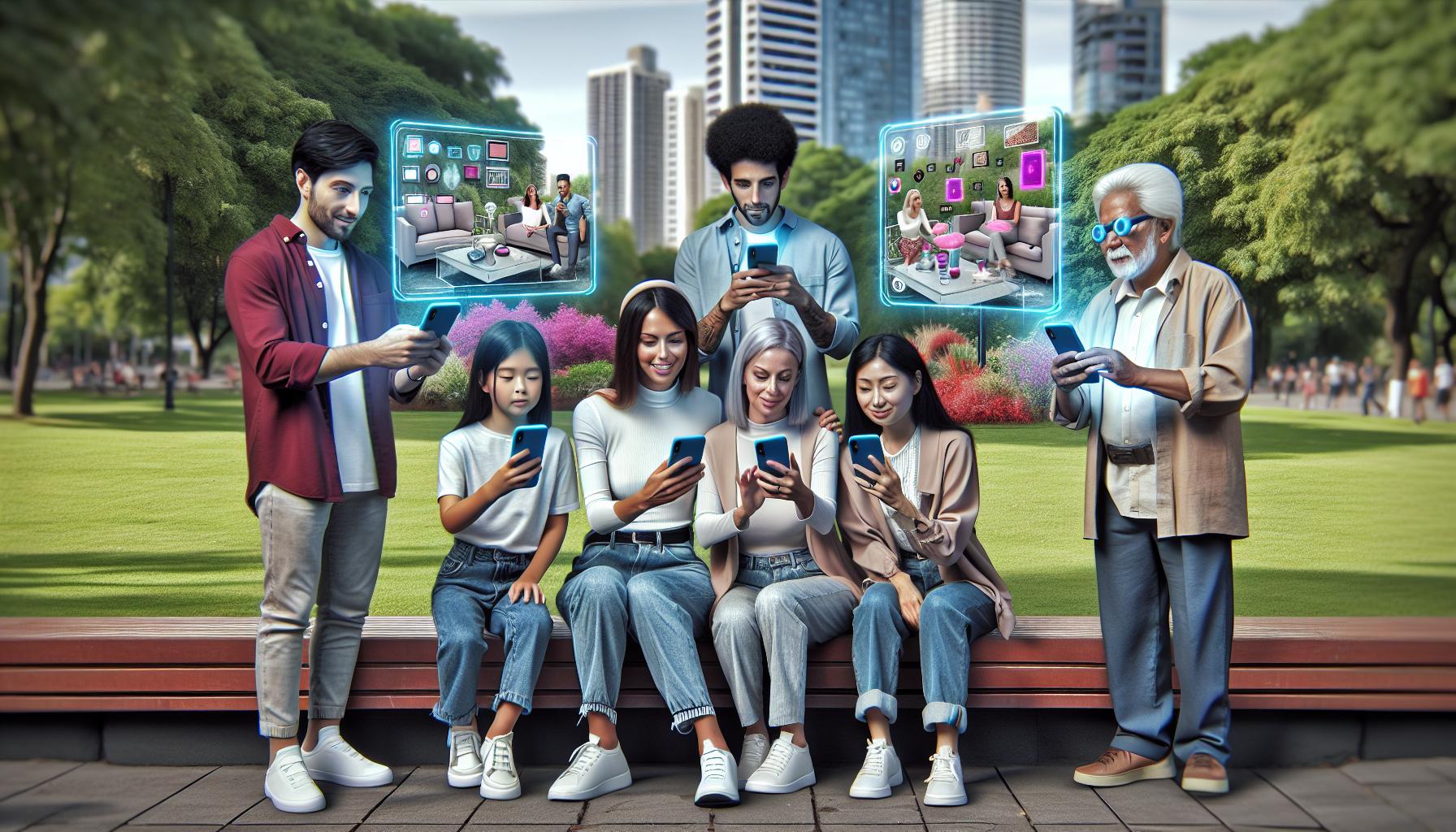Augmented reality is no longer just a futuristic dream reserved for sci-fi movies. Businesses are jumping on the AR bandwagon, blending the digital and physical worlds like a barista mixing espresso and foam. From retail to real estate, companies are discovering that AR isn’t just a flashy gimmick; it’s a powerful tool that enhances customer experience and boosts engagement.
How Is Augmented Reality Used in Businesses?
Augmented reality (AR) enhances real-world environments with digital overlays. This technology merges virtual elements with physical surroundings, creating interactive experiences. Businesses utilize AR to streamline processes and enhance consumer engagement.
How is augmented reality used in businesses? Retailers implement AR to improve customer experience. Shoppers can visualize products in their homes before making purchases. For example, furniture stores offer apps that allow customers to see how a couch fits into their living space, increasing purchase confidence.
In the real estate sector, AR showcases properties effectively. Potential buyers can take virtual tours of homes without physically visiting them. Such immersive experiences help clients understand layouts and features better than traditional photographs.
Training and maintenance represent another key area for AR application. Companies use AR simulations for employee training, leading to improved skills without risks. Technicians can access real-time information while working on equipment, enhancing efficiency and accuracy.
Marketing strategies also benefit from AR integration. Brands create engaging campaigns that captivate consumers. Interactive advertisements allow users to experience products through their smartphones, enhancing brand connection.
Healthcare has embraced AR for anatomy visualization and surgical procedures. Surgeons benefit from real-time data overlays during operations, leading to increased precision. Training medical students with AR simulations enhances their understanding of complex procedures.
AR continues to evolve, becoming a tool for innovation in diverse industries. By adopting this technology, businesses improve processes and elevate customer interactions.
Applications In Retail

Augmented reality significantly transforms the retail landscape by enhancing consumer interactions and simplifying decision-making processes.
Enhancing Customer Experience
How is augmented reality used in businesses? Augmented reality elevates customer experience by providing interactive product visualization and personalized shopping. Retailers utilize AR to allow customers to visualize items in their own spaces, whether furniture, decor, or clothing, prior to making a decision. Shoppers engage more deeply with products, as AR overlays help them understand dimensions and styles better. Studies show that using AR can boost conversion rates, as it instills confidence in purchasing decisions. Customers walking through stores gain access to product details and promotional offers through AR applications, streamlining their shopping experience. Retailers also gather valuable insights on consumer preferences through AR interaction data, enabling them to tailor marketing strategies accordingly.
Virtual Try-On Solutions
Virtual try-on solutions leverage augmented reality to revolutionize the fitting room experience in retail. Customers can virtually try on clothing, accessories, and cosmetics without physical contact. Retailers like Warby Parker and Sephora implement AR technology, allowing shoppers to see how eyeglasses or makeup products appear on them before buying. This approach reduces return rates and enhances satisfaction by ensuring a better fit and match. Shoppers enjoy the convenience of trying multiple items quickly from anywhere, whether at home or in-store. Retailers not only reduce operational costs associated with returns but also foster a more engaging and enjoyable shopping environment using virtual try-on features.
Augmented Reality In Training

Augmented reality (AR) plays a crucial role in enhancing training within businesses. This technology increases engagement and efficiency in various training scenarios.
Employee Onboarding
AR streamlines the onboarding process for new employees. It creates immersive experiences that help them understand company policies, procedures, and culture. With AR, new hires can interact with a virtual environment that simulates real-world tasks. This immediate access to information leads to faster integration into their roles. In some cases, studies show that AR can reduce training time by up to 40%. Additionally, AR enables trainers to assess employee performance in real time, allowing for instant feedback on tasks.
Skill Development
AR significantly contributes to skill development across various industries. It allows employees to practice complex tasks in a safe, controlled environment. For instance, healthcare professionals can utilize AR to perform simulations of surgical procedures, honing their techniques without patient risk. In manufacturing, AR provides visual instructions for assembling parts, ensuring accurate execution. Reports indicate that AR can enhance knowledge retention by 75%, making it a powerful tool for effective training. Each of these applications showcases AR’s ability to facilitate continuous skill improvement and readiness for real workplace challenges.
Marketing And Advertising Strategies

Augmented reality plays a pivotal role in enhancing marketing and advertising strategies for businesses. It creates immersive experiences that captivate consumers, driving engagement and boosting brand visibility.
Interactive Campaigns
Interactive campaigns leverage augmented reality to immerse users in unique experiences. Brands design gamified elements that encourage consumers to participate actively. For instance, a cosmetics brand might enable customers to virtually try on makeup through their smartphones. Data shows that such interactive experiences increase user engagement rates by 80%. Companies integrating AR into their campaigns see significant boosts in social media shares and user-generated content, enhancing their reach and visibility.
Brand Engagement
Brand engagement elevates when businesses adopt augmented reality. Through AR, companies create memorable experiences that resonate with consumers. Visualization of products in real-world environments fosters deeper connections. For example, furniture retailers allow customers to place virtual furniture in their homes, increasing purchase intent. Studies indicate that brands employing AR see a 40% increase in customer retention rates. Enhanced interactivity transforms passive viewers into active participants, promoting loyalty and trust.
The Future Of Augmented Reality In Business
Augmented reality continues to find new applications in business, showcasing potential for transformative growth. Its widespread integration across sectors leads to emerging trends worth noting.
Emerging Trends
Adoption of AR technology is accelerating in various industries. Retailers increasingly implement AR for personalized shopping experiences, enabling customers to visualize products in their own environments. Companies invest in AR training solutions to enhance employee onboarding and skill retention. Innovative marketing strategies use AR to create interactive advertising campaigns that drive engagement. Virtual try-on solutions help reduce return rates significantly, with brands leveraging AR for fitting rooms and cosmetic applications. Furthermore, AR aids in improving customer service by enabling technicians to access real-time data during repairs. According to recent studies, AR applications can enhance conversion rates by up to 80%, solidifying its position as a vital tool for businesses.
Potential Challenges
Adopting AR in business presents several challenges. Integrating AR into existing systems requires substantial investment in technology and infrastructure. Additionally, maintaining user privacy and data security poses significant risks. Companies must address these concerns to foster consumer trust. The rapid pace of technological change necessitates continuous updates and training for employees, further complicating integration efforts. Limited understanding of AR’s capabilities among employees can hinder effective implementation. Moreover, ensuring compatibility across various devices and platforms presents additional hurdles. According to surveys, 45% of businesses cite these challenges as barriers to AR adoption, emphasizing the need for strategic planning to navigate potential pitfalls.
Landscape of Business
Augmented reality is reshaping the landscape of business by enhancing customer experiences and streamlining operations. Its applications in retail and real estate demonstrate its ability to engage consumers and facilitate informed decision-making. AR also plays a crucial role in training and marketing, offering immersive solutions that drive efficiency and brand engagement. As businesses continue to explore AR’s potential, they stand to gain a competitive edge through innovative practices. The future of augmented reality in the business world looks promising, with opportunities for growth and transformation on the horizon.

